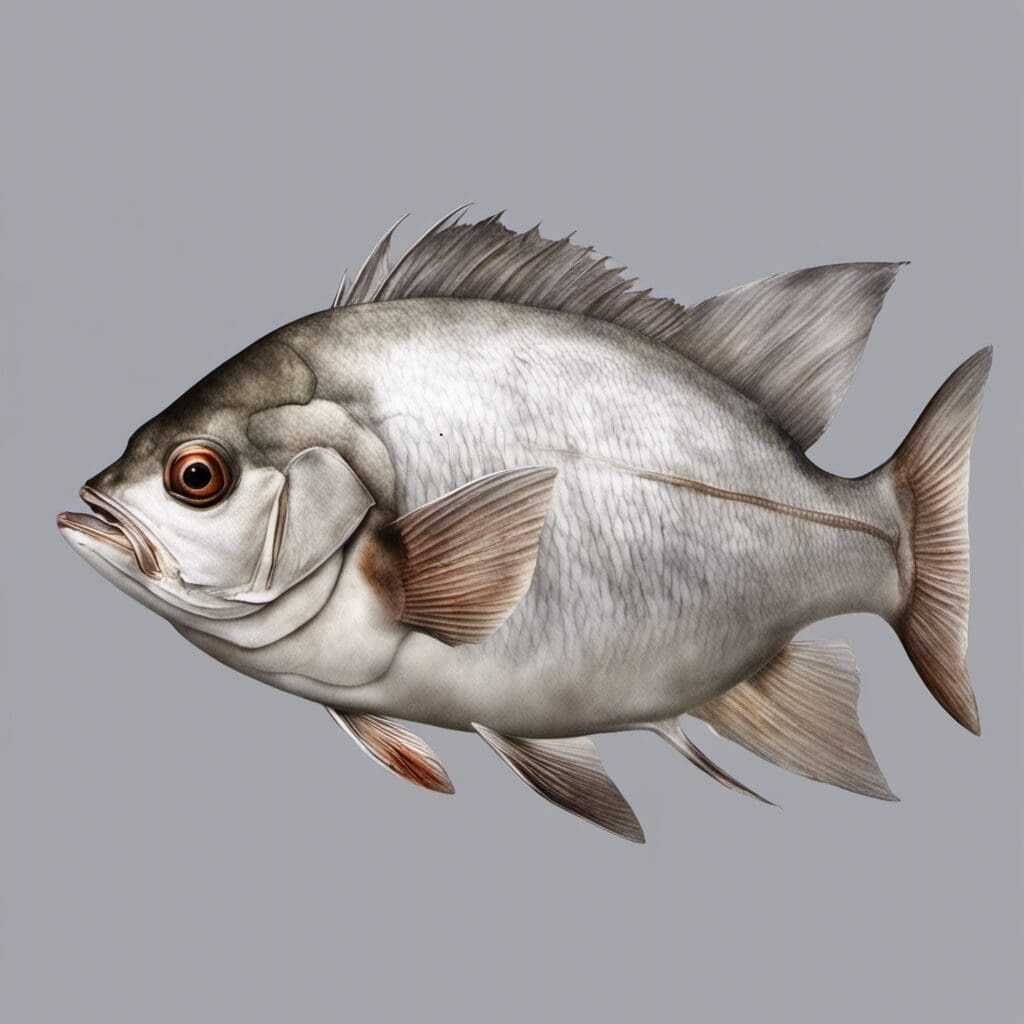Introduction
Diplodus argenteus, more commonly known as the South American Silver Porgy, is a highly sought after species in the Sparidae family.
Conservation Status
The conservation status of the South American Silver Porgy is currently listed as “Least concern” due to its wide distribution and large, stable population. Conservation efforts focus primarily on maintaining healthy marine habitats and managing fisheries to prevent overfishing.
Statistics
| Statistic | Average | Range |
|---|---|---|
| Length | 40 cm | 25 - 50 cm |
| Weight | 1.5 kg | 0.9 – 2 kg |
| Average Lifespan | 9 years | – |
Distribution
The South American Silver Porgy has a wide distribution throughout the waters of the subtropical western Atlantic Ocean, from the U.S. to Southern Brazil. It doesn’t have any notable migration patterns as this bottom-dwelling species does not usually swim long distances.
Habitats
All aquatic habitats for the South American Silver Porgy are characterized by warm temperatures in a marine environment. This species is found in a wide depth range from shallow inshore waters to depths of up to 30 meters.
When and Where to See
The South American Silver Porgy can be spotted all year round, but it is most abundant during the summer months. It is primarily active during the daytime.
Best Fishing Locations
Top Locations
The following are some of the best locations for fishing South American Silver Porgy:
- Florida Keys, USA
- Bay of Pigs, Cuba
- Fernando de Noronha, Brazil
- Yucatan Peninsula, Mexico
- Florida Bay, USA
General Tips
Look for this species over sandy or muddy bottoms. They gather in schools so where you find one, you’re likely to find many more.
How to Catch
The South American Silver Porgy is a bottom feeder, so anglers often use bottom fishing techniques with bait such as shrimp or squid. The summer months are usually the best time for fishing this species.
Identification Guide
The South American Silver Porgy gets its name from its brilliant silver coloration. It has a slim oval shape and a single, long dorsal fin. Compared to other porgy species, the Silver Porgy has a smoother scale texture.
Culinary
The South American Silver Porgy is a tasty fish with a sweet, mild flavour and firm, white flesh. It’s often grilled, baked or fried and served with a variety of sauces and sides.
Additional Information
The South American Silver Porgy is primarily a carnivorous species, feeding on crustaceans, mollusks, and other small invertebrates. Its primary predators include larger fish species and humans. This species does not have any notable folklore or historical significance.
References and Further Reading
For more information, consider consulting marine biology textbooks and regional fishing guides. Digital resources, such as the Florida Museum’s Fishes of Florida database, may also provide valuable insights

